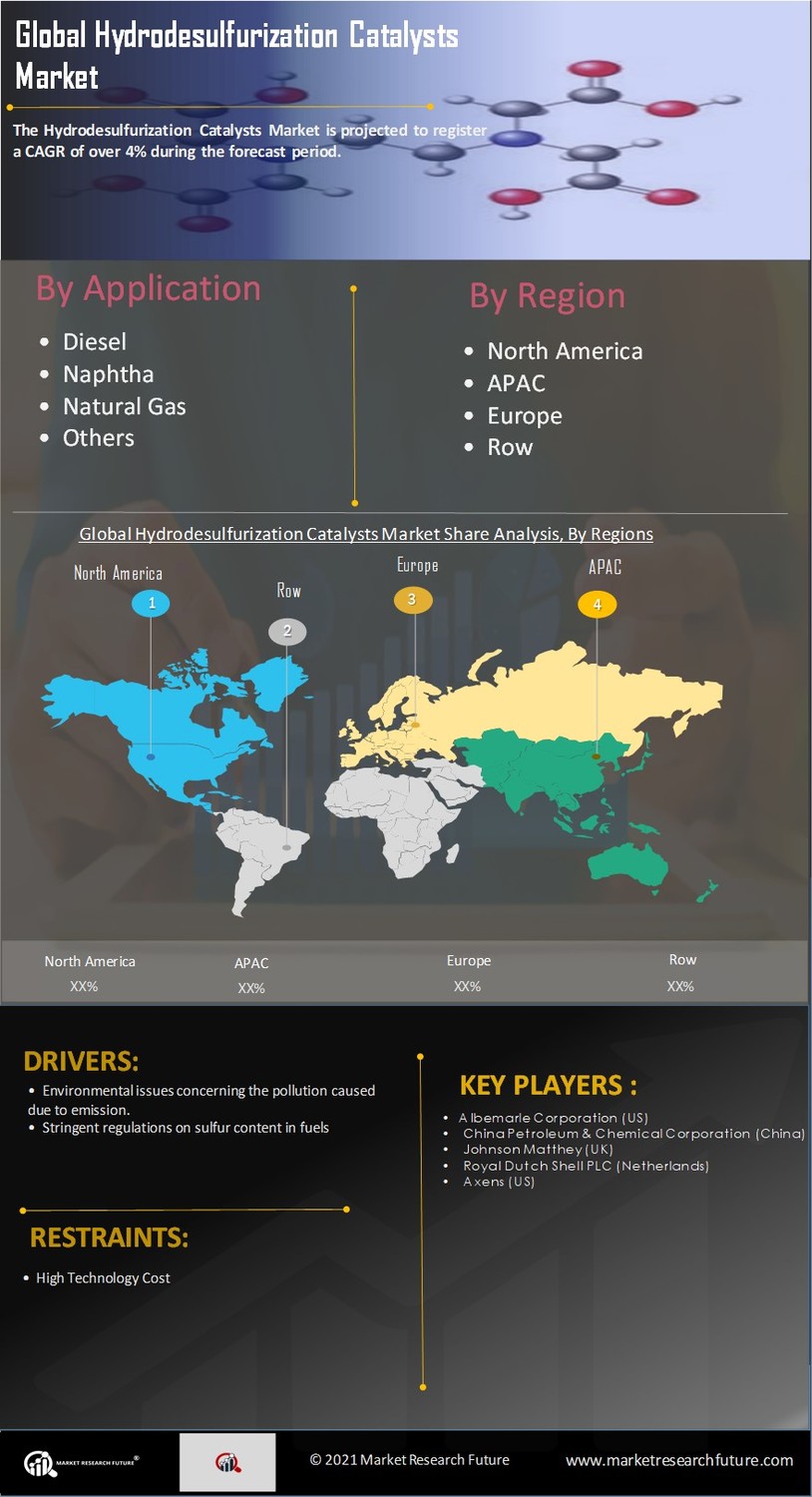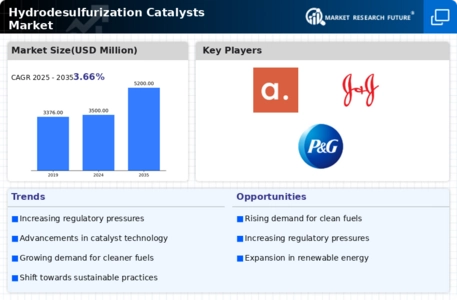Rising Demand for Clean Fuels
The Global Hydrodesulfurization Catalysts Market Industry is witnessing a surge in demand for clean fuels, driven by consumer preferences and environmental concerns. As countries strive to transition to cleaner energy sources, the need for low-sulfur fuels has become paramount. This trend is particularly evident in regions like North America and Europe, where the adoption of cleaner fuels is accelerating. The market is expected to reach 3500 USD Million in 2024, reflecting the growing emphasis on sustainability and the role of hydrodesulfurization catalysts in producing cleaner fuels.
Increasing Regulatory Pressure
The Global Hydrodesulfurization Catalysts Market Industry is experiencing heightened regulatory pressure aimed at reducing sulfur emissions from fuels. Governments worldwide are implementing stringent regulations to meet environmental standards, which necessitates the use of advanced hydrodesulfurization catalysts. For instance, the European Union's directive on sulfur content in fuels has compelled refineries to adopt more efficient catalysts. This regulatory landscape is projected to drive the market's growth as refiners seek to comply with these regulations, thereby enhancing the demand for hydrodesulfurization catalysts.
Growth of the Oil and Gas Industry
The Global Hydrodesulfurization Catalysts Market Industry is closely linked to the growth of the oil and gas sector. As global energy demands continue to rise, the oil and gas industry is expanding its refining capacities, which in turn drives the need for hydrodesulfurization catalysts. The market is projected to grow at a CAGR of 3.66% from 2025 to 2035, reflecting the ongoing investments in refining technologies. This growth is particularly pronounced in emerging economies, where increased energy consumption is prompting refiners to enhance their capabilities and adopt advanced catalysts.
Emerging Economies and Urbanization
Emerging economies are playing a pivotal role in shaping the Global Hydrodesulfurization Catalysts Market Industry. Rapid urbanization and industrialization in countries such as India and China are leading to increased fuel consumption and a corresponding need for cleaner fuels. As these nations implement stricter environmental regulations, the demand for hydrodesulfurization catalysts is expected to rise. By 2035, the market is anticipated to reach 5200 USD Million, driven by the growing awareness of environmental issues and the necessity for sustainable fuel production.
Technological Advancements in Catalysts
Technological advancements in hydrodesulfurization catalysts are significantly influencing the Global Hydrodesulfurization Catalysts Market Industry. Innovations in catalyst formulations and processes are enhancing efficiency and selectivity, which in turn improves the overall performance of hydrodesulfurization units. For example, the development of novel catalyst materials that operate at lower temperatures can reduce energy consumption and operational costs. These advancements are likely to attract investments and drive market growth, as refiners seek to optimize their operations and comply with stringent environmental regulations.














Leave a Comment